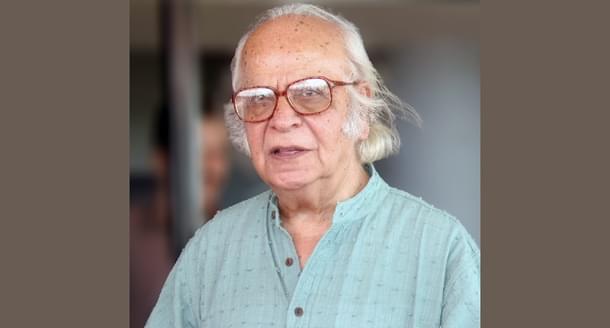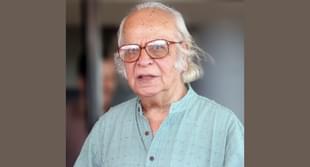Obit
Like River Saraswati Whose Path He Helped Rediscover, Prof Yash Pal Now Rests In The Lap Of History
Aravindan Neelakandan
Jul 26, 2017, 06:19 PM | Updated 06:19 PM IST
Save & read from anywhere!
Bookmark stories for easy access on any device or the Swarajya app.


Death is an inevitable biological certainty just as birth is in a way a biological accident. And in the pause between the two notes, a fulfilled life is more than the sum total of the nucleotide sequences and neuronal pulsations. One such is that of Professor Yash Pal who passed into immortality on 24 July 2017.
Prof Yashpal took a keen interest in the constructive and people-oriented use of space technology, particularly for knowledge dissemination. For us, the generation who were teenagers in late 1980s, the afternoon telecasts of the University Grants Commission (UGC) opened new windows not only into sciences but also into art and humanities.
Some programmes were politically loaded, but most of the programmes took our knowledge of things we learnt in school beyond the two covers of the dull textbooks. We now know with gratitude that it was Prof Yash Pal who was the brain behind this endeavour. The creation of Educational Media Research Centres and Audio Visual Research Centres (EMRC and AVC) in universities created a very healthy competition between the programmes of different universities.
One of the memories of the late 1980s is sitting in the television hall of the school and hostel, ranking the programmes of different universities. Later, Dr Yashpal played a catalytic role in the establishment of Consortium for Educational Communication (CEC). When in 2005 CEC established Edusat network it should have been a very great fulfilling moment for the Professor.
A man of great integrity, he lived uncompromised on his principles. A declared atheist, he was also against astrology. To him it was pseudo-science, and he raised his voice against the decision of the UGC under the National Democratic Alliance (NDA) -I to include astrology in the curriculum. At the same time, he was taken to task by the leftists too. In 2005, the United Progressive Alliance (UPA)-I made him the chairman of the steering committee for revising the ‘communal’ textbooks launched during the National Democratic Alliance (NDA) regime.
Krishnan Kutty, a rabid ‘secular’ politician from Kerala, launched a scathing attack on Prof Yash Pal, for the committee headed by him had 'callously sidelined the fact that the Hindu religious bigots had diabolically used education as a tool...' and had 'poured cold water on the secular hopes and aspirations of the progressive Indian mind.'
Another great contribution of Prof Yash Pal was identifying the paleochannels of the river Saraswati through the study of remote satellite imagery. He was one of the reasons for the renewed interest that came in the Hakra-Ghaggar channels identifying them with the Vedic Saraswati. Yashpal and his team made an insightful study of the Landsat imagery and had observed thus:
Our studies show that the Satluj was the main tributary of the Ghaggar and that subsequently the tectonic movements may have forced the Satluj westward and the Ghaggar died. ...As discussed above, during the period 4-5 millennia BP northwestern Rajasthan was a much greener place with the Sarasvati flowing through it. Some of the present rivers joined to make the Sarasvati a mighty river, which probably discharged into the sea (Rann of Kutch) through the Nara, without joining the Indus.
Written in the 1980s, this was one of the earliest papers that used satellite technology in the service of paleo-geology and archeology. Had the same been done by a Westerner, it would have triggered massive public interest, related movies and many pop-science books and also a ‘National Geographic’ cover. But even an in-depth lucid telling of the scientific odyssey, in search of the lost river, had to wait decades till Michael Danino would come with a book in 2010.
However, this discovery triggered a ferocious attack on Dr Yash Pal from a medieval historian of the Marxist fundamentalist variety, Prof Irfan Habib. He accused Yash Pal et al. of having 'rendered a possibly doubtful service to Historical Geography when they sought to use Landsat imagery in order to reconstruct a grand course for the 'Sarasvati' river. ....Finally, where even Landsat imagery shows no traces of any channel, a series of interrogation marks were used by Yash Pal and his colleagues to conjure up their existence for us. Clearly, this is an unacceptable procedure for any serious reconstruction of past physical geography.’
But whether it is standing against astrology in class curriculum or standing by the interpretation of empirical data from satellite imagery in identifying the paleo-channels of Saraswati, Prof Yash Pal always stood above such petty considerations of ideology or belief.
I also have a personally impersonal note about Prof Yash Pal. Recently in an article on the success of the Indian Space Research Organisation (ISRO), I commended thus:
India, with its soft and digital skills, can add great value to its launch vehicle services while keeping intact its unique selling point – reliability with cost-effectiveness. Come to think of it, these are the values Mahatma Gandhi would have cherished in a technology. ISRO’s success, therefore, appropriately reflects the Gandhian ideals.
A good friend of mine well versed in science and technology, and who is taking keen interest in taking science as well as our history – particularly of ancient monuments – to younger generations, took me to task for writing thus. He wrote: “…but `this is nonsense. Gandhi was technology averse, even though he sometimes claimed that he was not, and after all, the charka itself was a machine. Gandhi was especially averse to almost all western technology and quite contemptuous of their principles. ISRO PSLV rockets are more in tune with Nehru's leanings, if a politician has to be brought in at all…”
I am no Gandhian and have no high regard for the neo-pseudo-Gandhians. What I see in Gandhi is a kind of a deeper understanding of technological pluralism. In 2003 I wrote an article in the Tamil webzine Thinnai titled ‘The spinning wheel as a symbol of future technology’, where I have argued that the technological symbol that Gandhi used was for a decentralised futuristic technology. In any cost-effective technology particularly in the post-colonial countries I feel there should be an influence of Gandhian technology-values. Later when thinking of answering that friend, which I never did, I was searching and I stumbled upon something that excited me tremendously.
I published my Tamil article in the web-zine on 15 August 2003. The same year Prof Yash Pal had delivered a lecture at M G University Kottayam, on 26 November titled 'Reinventing Education for an Inclusive World'. In that lecture, Dr Yash Pal had pointed out that Gandhi's followers had not understood him at that time. 'It was understandable', he had said, 'because at that time deep yet simple-looking ideas were not sustainable.' He went on to point out that during Gandhi's time decentralised technology without losing the advantage of scale was impossible. But it is no longer so.
Reading the lines, I felt vindicated. What I was talking about are the deep values which have been enshrined in the ISRO’s way of approaching the problem in a cost-effective people-oriented way. The sense of identity one feels not through personal relation but through the perceived, or real identity of ideas is much stronger. A regret lingers that I have never met this great human being in person, who lived right during our times.
In a lecture given in the aftermath of 9/11, Dr Yash Pal made a nuanced criticism of religious bigotry and said:
"If the world needs a “jihad” then it should be to make people understand that this seems to be the only way of having decentralised integration, only way to preserve and enhance diversity, the only way to give fulfilment to individuals. Such an enterprise would need the best of technology."
Fulfilled lives like his are a real accordance between the two notes – a scarce at all. And then Rilke said, ‘the song remains immaculate’.
Aravindan is a contributing editor at Swarajya.





